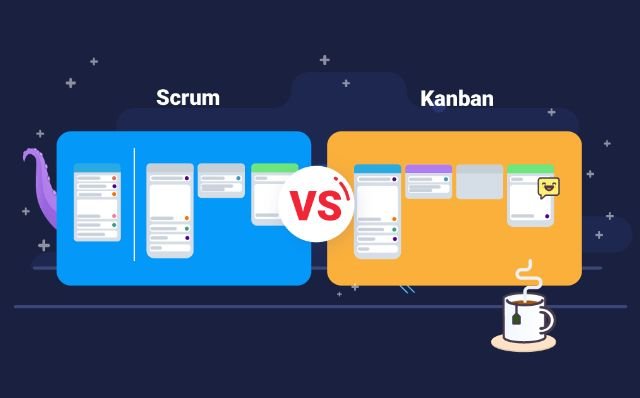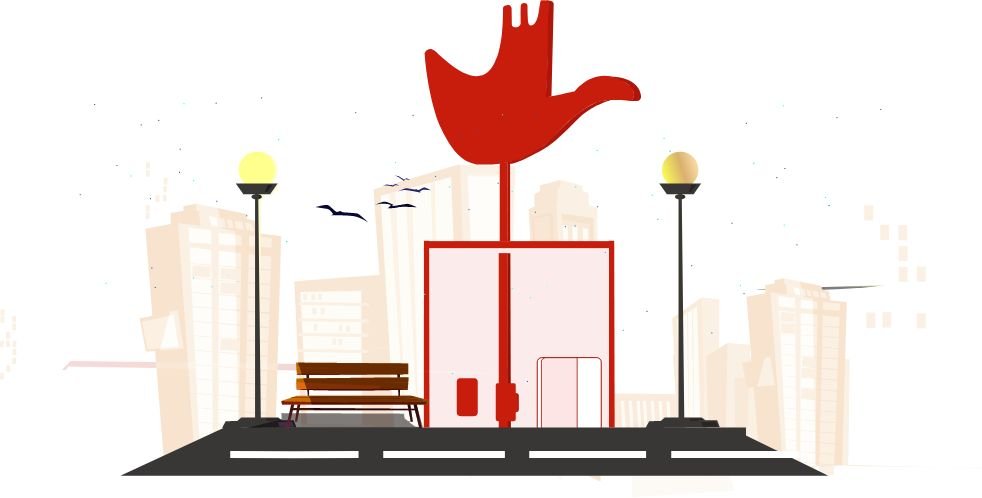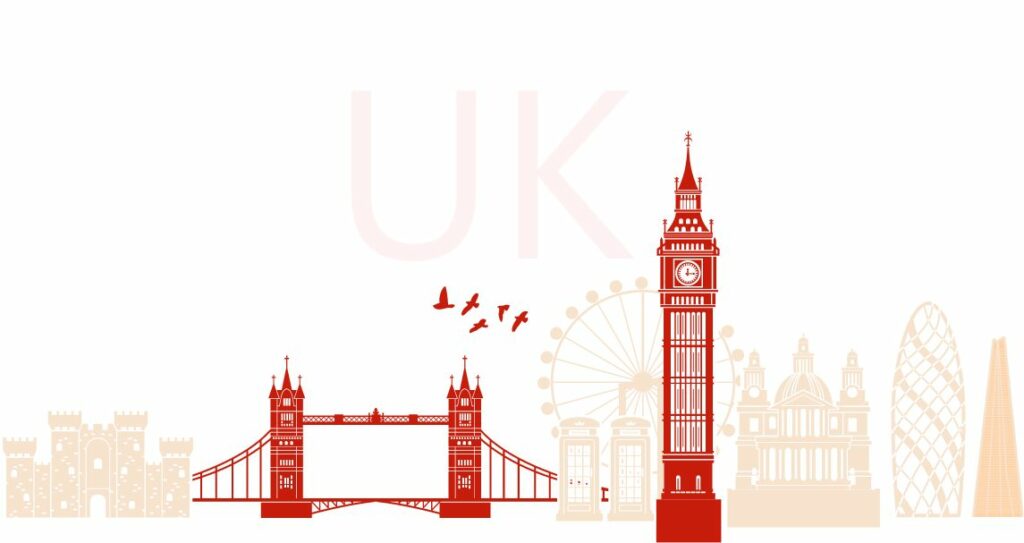Suppose you are a group with huge activities to oversee or searching for approaches to improve your venture project management methodologies. In that case, you need to know the right methodologies and technologies to incorporate them. Here you can learn about Kanban vs Scrum approaches. Though these two principles are the same, these two frameworks have unique features.
What is Agile Software Development?
It is an umbrella term for a set of practices and frameworks that break down complex projects into small manageable goals. Its benefit includes the adaptor’s ability to adapt and change. Change at any step depending on market conditions, corporate obstacles, and supply only relevant products to the market. The agile approach is usually flexible, quickly adapts to changes, iterates less while implementing faster.
Understanding Kanban vs Scrum
Scrum is an agile methodology that assists with conveying the business software in the briefest time. It emphasizes the product’s cooperation and time-based iterative advancement; It works on a self-organizing, cross-functional team principle. The Key Areas for Scrum are requirements, changes, product optimizations, and processes. It is also focused on Backlog, and it is a problem solver.
The scrum approach helps:
- In Project Management
- For easy adaption due to transparency
- To address constantly changing issues
Hire Kanban vs Scrum: Choose the Right Agile Method for Your Product
Scrum Methodology
Sprint
In Scrum, your projectis made up of a sequence of sprints. Assigned clients test usefulness after conveyance to proceed with sprint approval. The cycles in which the Sprint is outlined are short (2 to 4 weeks). After this period, the outcome is shown to the customer. For the customer, it converts into the way that they can continuously picture the outcomes and change choices all the more rapidly if correction is required. You don’t need to delay until the finish of the venture to see the outcomes.
Sprint planning: Milestones Sprint planning gathers that the whole Scrum group impress the assignments that will include a sprint and the team’s targets.
Daily meeting / Daily Scrum: A daily meeting is a short gathering (15 minutes) in which the Scrum Master and Scrum Team partake. Each colleague surveys the work they did yesterday, what they intend to do today, and whether they have experienced any snags that risk the conveyance of the run
Sprint review: It’s anything but a meeting with the customer wherein the Product Owner presents the product, and the Scrum Team shows how it functions. By then, the customer should approve the progressions made and give input to check whether any prioritization changes ought to be made to the Product accumulation.
Sprint retrospective: Continuous Improvement
This step is an inward gathering that happens toward the finish of a sprint. The group audits changes and enhancements are recommended to be carried out.
Advantages of Scrum
Better Projects: Through Iterations or Sprints, you can section the task into little squares substantially more reasonably than if you attempt to cover a whole venture from start to finish.
Reasonable Deadline: When attempting to execute a major venture, one of the serious mix-ups is attempting to expect too close a delivery. There is a great deal of space for unanticipated occasions and vulnerabilities that postpone delivery throughout a significant period. By fragmenting the goal to be conveyed, it accomplishes that the safety buffers
are a lot lower. This way, the last conveyance dates are a lot nearer to plan.
Team learning: The corporations are finished in a short space of time, ordinarily between about fourteen days and a month, and that they are autonomous from the rest, takes into account discovering that can be utilized in the following runs of the jobs.
Quick and precise Feedback: These gatherings permit the whole group to know the circumstance of the venture in the entirety of its features and rapidly propose answers for potential misfortunes. Along these lines, the response time to mistakes or episodes is essentially diminished.
Self-sufficiency: Agile techniques include all pieces of a task: teammates, associates, customers, providers, a strategy that empowers commitment inside the group and gives an undeniable degree of self-rule.
Getting a minimum viable product (MVP)
It is adequate and offers the essential assurances to dispatch it available. In any case, it is a long way from awesome since that isn’t the fundamental target. The actual market will be accountable for testing it and offering criticism, permitting it to rapidly get refreshes customized to the particular and genuine necessities of the intended interest group.
Kanban
Kanban visualizes both the process and the actual work passing through the working process. The main objective of implementing Kanban is to identify potential bottlenecks in the process and fix them. Kanban’s goal is a smooth workflow at optimal speed. Kanban approach helps.
- Continuous Incremental Changes
- Understand intricate information like risks
- Reduces the workload stress
Kanban Methodology
Characterize the work process in each task / Work Visualization:
Follow the workflow. It would help if you made an apparent and open board to all individuals from the group. As it’s anything but a visual technique, it permits the tasks to be known initially, and you can perform new errands effectively.
Phases of the production cycle This technique depends on the division of work into various parts. Being a particularly visual strategy, it gains in effectiveness at all levels.
Stop starting, start finishing: (Limit work in process: Time Reduction)
This method involves progressing assignments are focused on over new ones. The work in progress should be restricted and can’t surpass a specific number of jobs in each stage. Permits you to focus on, make exact reports.
Work-flow Control Focus on flow – Smooth Optimization of Work, Continuous Improvement: Measure work effectiveness by tracking.This strategy doesn’t make a difference to only one venture, yet you can blend various undertakings and assignments.
Esferasoft Can Help You Hire Kanban vs Scrum: Choose the Right Agile Method for Your Product
Advantages of Kanban
Transparency: Delivery times are more limited, and there is more prominent dependability in them. Everybody understands what their undertaking is and where they are in their cycle.
Keep away from wasteful errands: Overproduction and restricted assets are kept away, which means having more prominent accessibility of materials.
Assignment control: Creation time is quicker, accordingly, exertion
control is diminished, and arranging is improved. This control straightforwardly
influences higher efficiency in the buying, supply, and control region. Stock
turnover increments and the less stockpiling limit are required.
Adaptability: As the whole group knows impeccably what their errand is and performs.
How are Scrum and Kanban the same?
- They both break down the complex tasks into parts and complete them proficiently.
- Both focus on optimization of the work, the process, and continual improvement.
- And both share a related focus on an extremely apparent to drive workflow improvement
- Both are agile and lean
- Both use Pull scheduling
- Both limit WIP
- both focus on delivery and releasable software
- Both are based on self-organizing teams
Differences Between Kanban vs Scrum
Field of application
Scrum is for Complex product development, unclear solution concepts, and innovations.
Kanban is for services, routine tasks, process improvement, Complex product development, maintenance, and other services.
Procedure
Scrum has a fixed cross-functional team (upto nine members), requires a multidisciplinary team. Kanban has no specific procedure from personal Kanban (One Person or Team); teams made up of specialists are allowed.
Roles
Scrum has three processes: Daily Scrum, Sprint Planning Meeting, and Sprint Retrospective. (Scrum Master, Product Owner, and Team roles) Kanbanhas no fixed roles, optional – service request manager, Service Delivery Manager.
Delivery of works
ScrumProduces functional work. Kanban Delivery Depends on context and needs.
Focus
ScrumDeliver products with the highest possible value. Kanbandelivers a constant flow of works.
Period
In Scrum – fixed time iterations, with fixed cycles called Sprints, In Kanban – continuous work and no interactions or cycles during development.
Changes
In Scrum, it is not allowed to change the tasks of the Sprint In Kanban, you can modify the tasks until it goes into flow.
Product Stack
In Scrum, the product stack has to be at least the size of a Sprint. In Scrum, a prioritized product stack is needed in Kanban; drag the new tasks through the panel until they reach their final state. In Kanban, the story or task is dragged directly from the client.
Graphical Representations
In Scrum, a series of meetings are held, and a series of graphs are used. Kanban does not consider such meetings or graphics.
Process
In Scrum, the boards will be reset at the end of each Sprint. In Kanban, as we are going to have an entry-exit flow.
Wrapping Up
Scrum is significantly utilized for Backlog, while Kanban centers around the dashboard. Kanban supports the addition of persistent improvement, usefulness, and productivity. Scrum is utilized for time-bound emphasis. Kanban is utilized for arranging distinctive
terms for singular emphasis.












